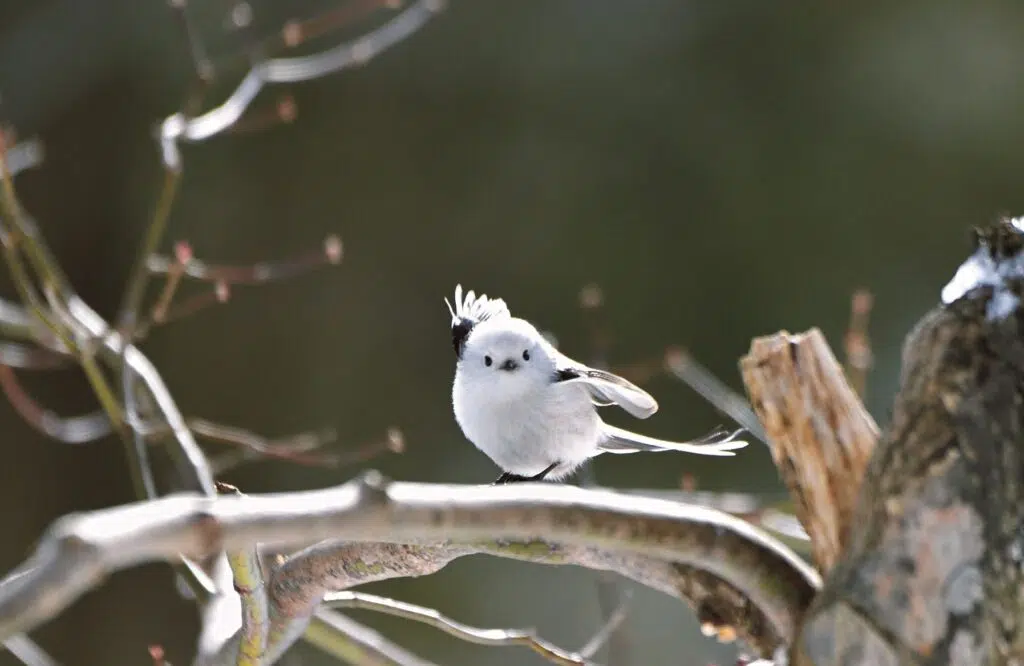
Long-tailed Tit plumage varies substantially across its range, and the pale head of the subspecies found in Hokkaido, Japan, along with its inquisitive behaviour, has long inspired many a nature lover. Discover more about these real-life ‘snow fairies’ in the latest ‘Through the lens’ article.
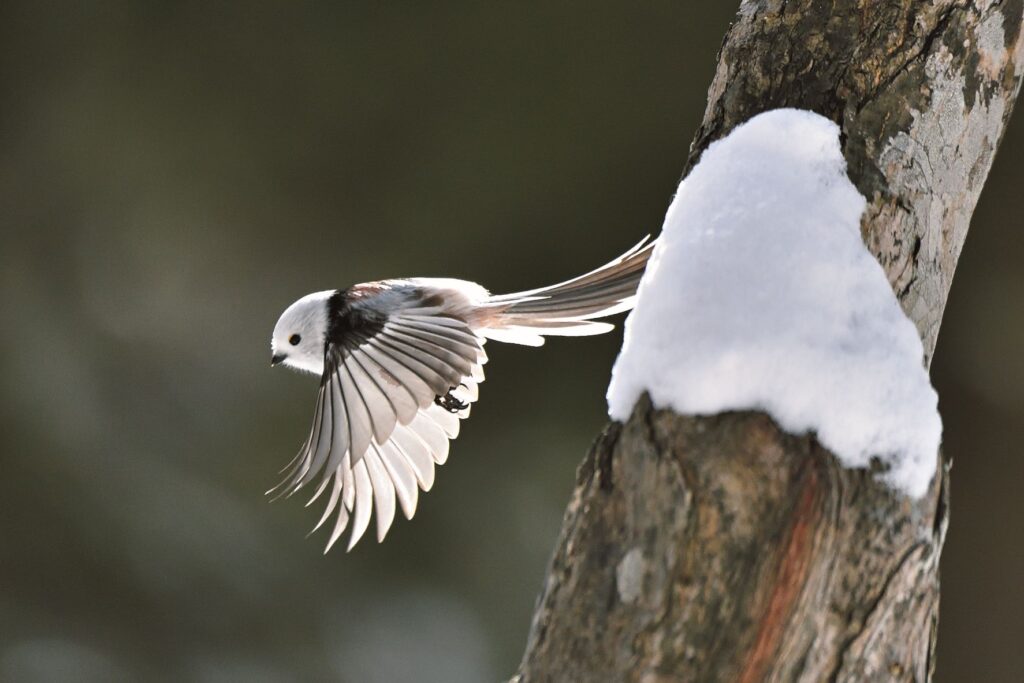
Subspecies are those belonging to the same species that are usually geographically isolated and have therefore developed distinct differences in body colour, size and pattern. The Long-tailed Tit subspecies found in Honshu, Kyushu and Shigoku, and Tushima Island has a thick black eyebrow like patch.
The subspecies of Long-tailed Tit found in Hokkaido Japan, known as Shima-Enaga in Japanese, is becoming increasingly popular lately. They attract not only birders but also non-birders’ hearts. I’ve been spending time going through pretty photos of Long-tailed Tit, and if I continue I’m afraid I’ll miss the opportunity to discuss the bird, so I’m going to take the plunge and show you a picture of Shima-Enaga.
It was taken in Teshikagacho, Hokkaido, where I first saw Shima-Enaga, on February 1st, 2018. Although I was fine while I was concentrating on shooting photographs, when I stood still and waited for the birds, I felt the blistering cold. Another unforgettable memory from the day was that I made the mistake of taking photographs using a tripod with a hydraulic head, despite the negative temperature. Because the oil had frozen inside it, the lens could not be swung from side to side, so I had to move the tripod every time the birds moved. Since then, I have visited Hokkaido several times, and always make sure to take a different tripod in winter.
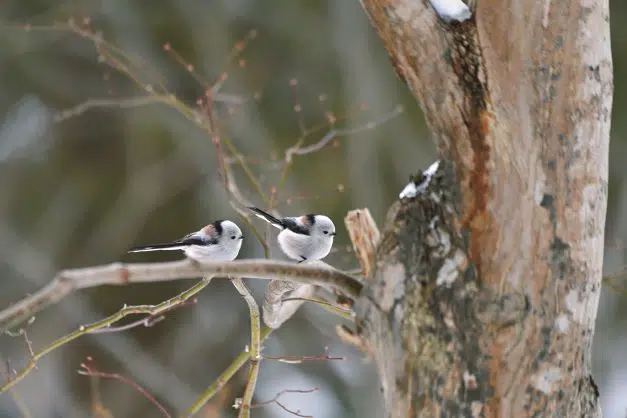
Long-tailed Tits prey on small insects and spiders at the tips of branches. It also drinks sap from sawtooth oak and maple trees. If sap freezes into icicles, they often drink the dripping sweet sap while hovering. In winter, when invertebrate food sources are scarce, this is an important source of nourishment.
On a different note, when I visited “The Bird Watching Cafe, Chitose”, which is owned by the photographer Mr. Tadashi Shimada, I heard an interesting story about the use of fat for bird feeding. I would like to share it for those of you who have a feeder in your garden. Once pork or beef fat gets on your hands, it’s important to scrub them with soap and hot water to remove it. This is because if it gets on a bird and sticks to its feathers, it reduces their insulation and may therefore negatively impact the birds’ health. If you make a wooden crate and put a wire mesh inside to hold the fat, birds will stay in the crate, minimizing the potential for fat to stick to their body. I’d never thought of this idea!
Some may point out the ecological impact of bird feeding, which is still relatively poorly understood. It seems important to follow proper procedures, such as choosing the right type of feed for the appropriate season, placing fresh and good-quality food, and keeping birdfeeders clean.
Returning to the main subject of this article, Shima-Enaga has a white face and a round, fluffy, snowman-like shape when facing forward. It has an easily illustrated form, with black eyes, stylish pink eyelids and a small triangular black beak. The species’ friendliness and adorable gestures are what likely makes people fall in love with them. Indeed, the way it tilts its head and looks at me inquisitively often makes me smile.
For many warm-blooded animals, individuals of the same species often weigh more in colder regions. In extremely cold regions, this larger body size may be advantageous, as it reduces heat loss. It therefore seems miraculous that Long-tailed Tits, which weigh only 8 grams, live in Hokkaido, where winters are harsh, and its shining appearance makes it look like a real-life “snow fairy”.
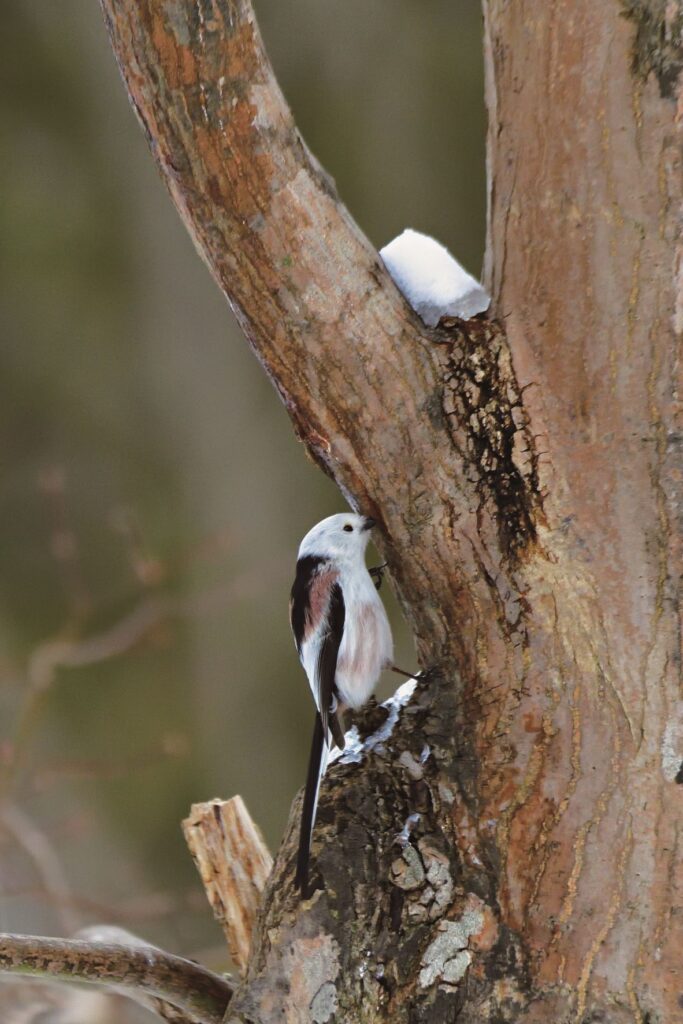
The white-faced form of Long-tailed Tit occupies most of the species’ global distribution, with the darker-faced subspecies inhabiting the periphery of its range. It is interesting to see how they have evolved.We often see subspecies with a thin black eyebrow in places such as Tokyo and Chiba.
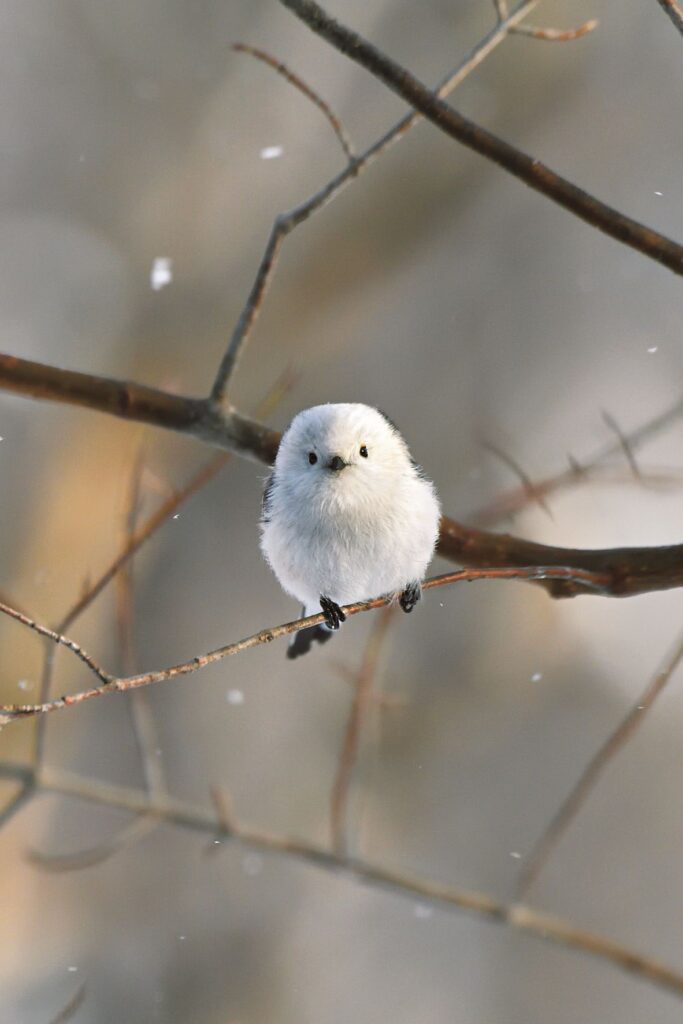
Pairs begin to prepare to breed around February, when it’s still cold.They use spider silk or moth cocoon threads with glue to build an oval nest of moss attached to it.From a distance, these nests look like a tree knobs. The interior of nests are lined with many bird feathers and are soft and fluffy.They lay 10-12 small eggs, each about the size of the tip of a pinky finger.
source: https://www.birdlife.org







